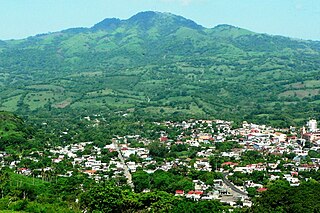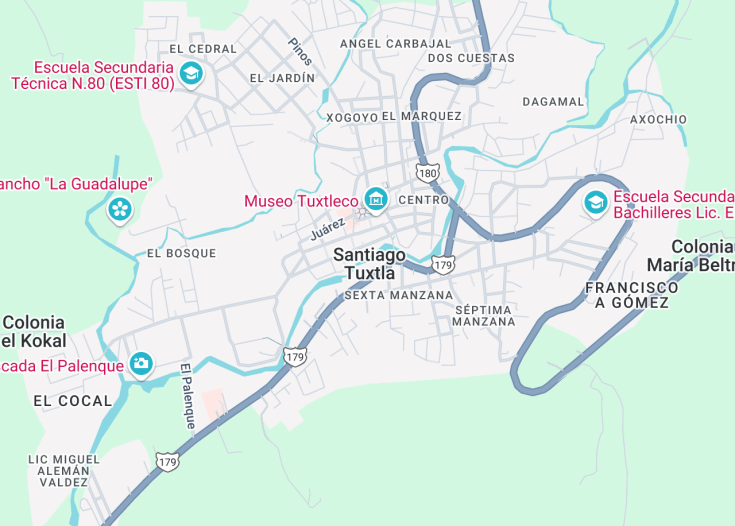Santiago Tuxtla is a captivating destination in the heart of Veracruz, Mexico, renowned for its rich cultural heritage and stunning natural surroundings. This ancient town boasts impressive archaeological sites, including remnants of Olmec civilizations, and is surrounded by lush tropical landscapes.
Visitors can explore the town’s historical museums, vibrant festivals, and local crafts. Santiago Tuxtla offers a unique glimpse into the traditions and history of this region, making it a must-visit for those interested in Mexico’s indigenous cultures and colonial past.
When visiting Santiago Tuxtla, make sure to attend the local festivals which showcase the rich folklore and traditions of the area.
Plan your trip during the cooler months from November to March for a more comfortable exploration of the area’s outdoor attractions and archaeological sites.
Top things to do & see in Santiago Tuxtla
Select the following sights and activities to discover best tickets and tours available in Santiago Tuxtla.
Santiago Tuxtla: A Vestige of Veracruz’s Rich Heritage
| Country | Veracruz (Mexico) |
| Time in Santiago Tuxtla | GMT-5 |
| Language spoken | Spanish |
| Population | 15,858 (INEGI, 2020) |
| Currency | Mexican Peso (MXN $) |
| Airports |
|
Nestled in the lush landscapes of Veracruz, Santiago Tuxtla boasts an enchanting setting that mirrors its rich history. This quaint town, one of the oldest settlements in the region, is renowned for its well-preserved colonial architecture and vibrant indigenous Totonac culture, offering a profound insight into the area’s pre-Hispanic and colonial past.
Santiago Tuxtla’s significance is amplified by its archaeological treasures, including the Tres Zapotes site, home to the colossal Olmec heads that hint at the town’s historical importance as part of the Olmec civilization, considered by many as the mother culture of Mesoamerica.
Today, Santiago Tuxtla continues to celebrate its heritage through various cultural festivals such as the Fiesta de Santa Maria Magdalena, which attracts visitors with its traditional dances, music, and regional cuisine. The town also serves as a gateway to the surrounding natural wonders, including the San Martin Volcano and the lush Los Tuxtlas Biosphere Reserve, making it a favored destination for eco-tourists and history buffs alike. The blend of natural beauty, historical depth, and cultural vibrancy makes Santiago Tuxtla a unique spot in Mexico’s diverse tapestry.
Where is Santiago Tuxtla?
Located in the state of Veracruz, Mexico, Santiago Tuxtla sits amidst the scenic mountainscape of the Los Tuxtlas region.
Distances:
| Route | Distance by car | Time by car |
|---|---|---|
| From Veracruz City | 87 miles (140 km) | 2 hours 20 minutes |
| From Xalapa | 116 miles (187 km) | 3 hours 15 minutes |
What is Santiago Tuxtla famous for?
Santiago Tuxtla is famous for its rich heritage visible in its ancient archaeological sites, particularly the colossal Olmec heads, which symbolize Mexico’s ancient civilizations.
History
Pre-Colonial Era (Before 1521)
The region that would eventually become known as Santiago Tuxtla has been influenced by various indigenous populations over millennia. The area was notably occupied by the Olmecs, one of Mesoamerica’s earliest and most advanced civilizations, around 1500 BCE. The Olmecs are famed for their colossal head sculptures and their contributions to Mesoamerican culture and society. After the decline of the Olmec civilization, other indigenous groups, such as the Totonacs and later the Aztecs, had settlements in this area. The rich cultural tapestry of these early inhabitants laid a foundational role in the area’s identity.
Colonial Period (1521-1821)
With the arrival of the Spanish in the early 16th century, the area of Santiago Tuxtla saw a dramatic change. It was officially founded in 1525 by Spanish conqueror Alonso de Avalos and named after Saint James. During this period, the Spanish established colonial administration and brought in missions to convert the indigenous populations to Christianity. The region became part of a larger Spanish colonial system that extracted resources and introduced new agricultural practices, including the cultivation of sugar and tobacco.
Post-independence Era (1821-Present)
After Mexico gained independence from Spain in 1821, Santiago Tuxtla experienced a varied political and economic evolution. The 19th century was marked by regional conflicts and the struggle for local power between liberal and conservative factions, reflective of the broader national political instability. In the 20th century, Santiago Tuxtla continued to develop primarily as an agricultural center, benefiting from its fertile lands and climate. Today, it remains an important historical and cultural site in Veracruz, blending its rich past with modern Mexican life.
Visit Santiago Tuxtla
What to see and do in Santiago Tuxtla, Veracruz (Mexico).
Santiago Tuxtla offers a wealth of attractions and activities appealing to both historical enthusiasts and nature lovers. Visitors can explore the Tres Zapotes archaeological site, home to the famous colossal Olmec heads.
The town itself hosts several colonial-era buildings, including the San Juan Bautista parish church with its impressive architecture. For ecological tourism, the surrounding landscapes offer lush vegetation and opportunities for bird watching and hiking.
- Tres Zapotes Museum: Explore Olmec artifacts and colossal heads.
- San Juan Bautista Church: Admire the architectural marvel.
- Nearby nature reserves: Enjoy outdoor activities like hiking and bird watching.
Festivities and Celebrations in Santiago Tuxtla
Santiago Tuxtla is vibrant with cultural events throughout the year. Notably, the town celebrates its traditional ‘Fiesta de Santiago Apostol’ every July, featuring parades, music, and dance that reflect the rich heritage of the region.
Additionally, the annual ‘Fiesta de Todos Santos’ in November brings the community together with offerings, traditional foods, and commemorative events around the Day of the Dead traditions.
Best time to visit Santiago Tuxtla
The ideal time to visit Santiago Tuxtla is during the dry season from December to May. This period offers pleasant weather suitable for exploring archaeological sites and enjoying various outdoor activities without the interruption of rain.
Is Santiago Tuxtla worth visiting?
Santiago Tuxtla is indeed worth visiting for those intrigued by rich historical backgrounds and diverse cultural expressions. The town offers a unique insight into the pre-Colonial and Colonial eras of Mexico, highlighted by its preserved Olmec relics and colonial architecture.
Its vibrant local festivals and surrounding natural beauty further enhance its appeal, making it a comprehensive cultural and historical experience.









